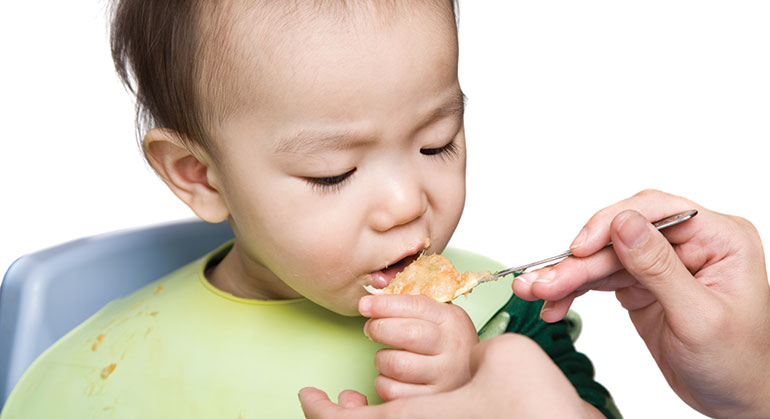Feeding children healthy meals and snacks on a daily basis is a challenge for any parent, but parents of a newly adopted, and perhaps undernourished, infant or toddler may truly find themselves put to the test. Understand that it may be weeks, months, or maybe even a year before your child is regularly eating high-quality, nutrient-dense foods in reasonable quantities without a battle.
While providing nutritious foods during this transition period is optimal, it’s not necessarily the goal; vitamin supplementation may be warranted. Mealtimes are a powerful tool to promote bonding, so your main objective is to develop a nurturing feeding environment that will teach your child he can trust you.
Food Anxieties
When Daniel came home from Ethiopia, his mother was astounded by the amount of food he would consume. At some meals, her tiny, 16-month-old son ate more than she did! Such behavior is common in children who have experienced hunger in their brief lives. Some may even eat or drink to the point of vomiting. If this is the case with your child, bring it to the attention of a health care provider, but don’t limit your child’s intake.
If your child displays anxiety about food by gorging, hoarding, or having difficulty waiting for meals to be prepared, keep mealtimes relaxed, and make it clear that food is plentiful and freely available:
- Reserve a special cabinet or shelf in the fridge for your child’s snack foods. Allow her access to this at any time.
- Allow your child to keep an airtight, plastic container of food in his bedroom.
- Don’t expect her to share food with other children or to eat from a communal bowl.
- Don’t eat off your child’s plate, even if she seems to be done.
- Keep fruit out on the table during the day, so she knows that food is always available.
- Give her a snack to put in her backpack.
- Never punish your child by withholding, or reward by giving, food.
Supplementing the Diet
During the adoption transition diet you may need to sacrifice your desire to serve only foods that are “healthy.” As your child adjusts to his new family, you want to minimize the number of changes (and traumas) that he is going through. Though adequate calories and good nutrition should be top priorities, they should not mean reinforcing your child’s negative relationship with food or disrupting the bonding cycle.
If your child has nutritional needs that can’t be met by diet alone, you may need to consider supplementation. Babies younger than one may need a multi-vitamin and/or vitamin D and additional iron (if they’re not drinking iron-fortified formula). Toddlers age one and older may benefit from additional omega-3 fatty acids and probiotics. Speak with a doctor before adding any supplements, as excess amounts of some vitamins and minerals, such as iron, can be toxic.
The standard age to switch from formula to cow’s milk is one year, but an undernourished child may benefit from remaining on infant formula or switching to toddler formula. Continuing to bottle-feed will also strengthen your bond.
If your child consumes very little, or refuses to eat at all, don’t try to coerce him to eat. First, rule out oral-motor, medical, and dental abnormalities that may interfere with eating, such as decayed teeth, enlarged tonsils, or parasites. Then consult with a health professional who has expertise in this area.
Introducing New Foods
Before joining your family, your child may have been fed a limited, or a quite bland, diet. [Learn about typical pre-adoption diets, by country, and other adoption nutrition topics, at adoptionnutrition.org.] Introduce new tastes and textures slowly, to give your child time to get used to them, and so that you can monitor any reactions.
- At each meal, serve one food your child already knows. Slowly introduce foods commonly loved by all kids (pasta, yogurt, bread, crackers, pizza, cereal, pancakes, and so on).
- Don’t assume that your child won’t like healthy foods, and don’t bring your own food preferences to the table.
- Serve the same food in different ways: fried eggs, scrambled eggs, hard-boiled eggs.
- If your child rejects a food, don’t give up. A child may need to see a new food 10 or 15 times before he’ll taste it. Try again, and make sure your child sees you eating that food—and enjoying your mealtimes together.
This article is the second in a two-part series. Read the first article,to learn about assessing a newly adopted child’s nutritional status.






